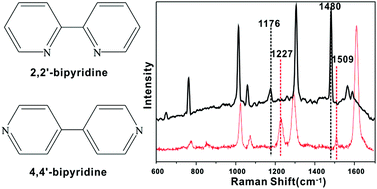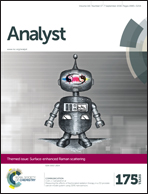Time-dependent SERS spectra monitoring the dynamic adsorption behavior of bipyridine isomerides combined with bianalyte method
Abstract
Based on the bianalyte method, time-dependent surface-enhanced Raman spectrosopy (SERS) spectra were applied to observe and study the competitive adsorption of bipyridine isomerides 2,2′-bpy and 4,4′-bpy. These time-dependent SERS spectra offer a significant advantage for observing the continuous SERS spectra of analyte with 2 s resolution, letting one monitor real-time competitive adsorption and corresponding SERS signal intensity for mixed or pure analyte type events under different concentrations. In this study, we report experimental evidence of competitive adsorption of two bipyridine isomerides using SERS mapping and independent spectra in chronological order. On the one hand, the time-dependent SERS spectra of 2,2′-bpy were prior dominated in the early stage either in high concentration or in low concentration. On the other hand, pure type 2,2′-bpy or 4,4′-bpy events only occurred for strong intensity, whereas weak intensity events exhibited more mixed analytes in low concentration, showing a great difference from those at the higher concentration. In addition, we believe that these results and this evidence can motivate the use of time-dependent SERS spectra for distinguishing the fingerprint information of several molecules from similar isomeride molecules in chemical and biological systems.

- This article is part of the themed collection: Surface-enhanced Raman scattering

 Please wait while we load your content...
Please wait while we load your content...